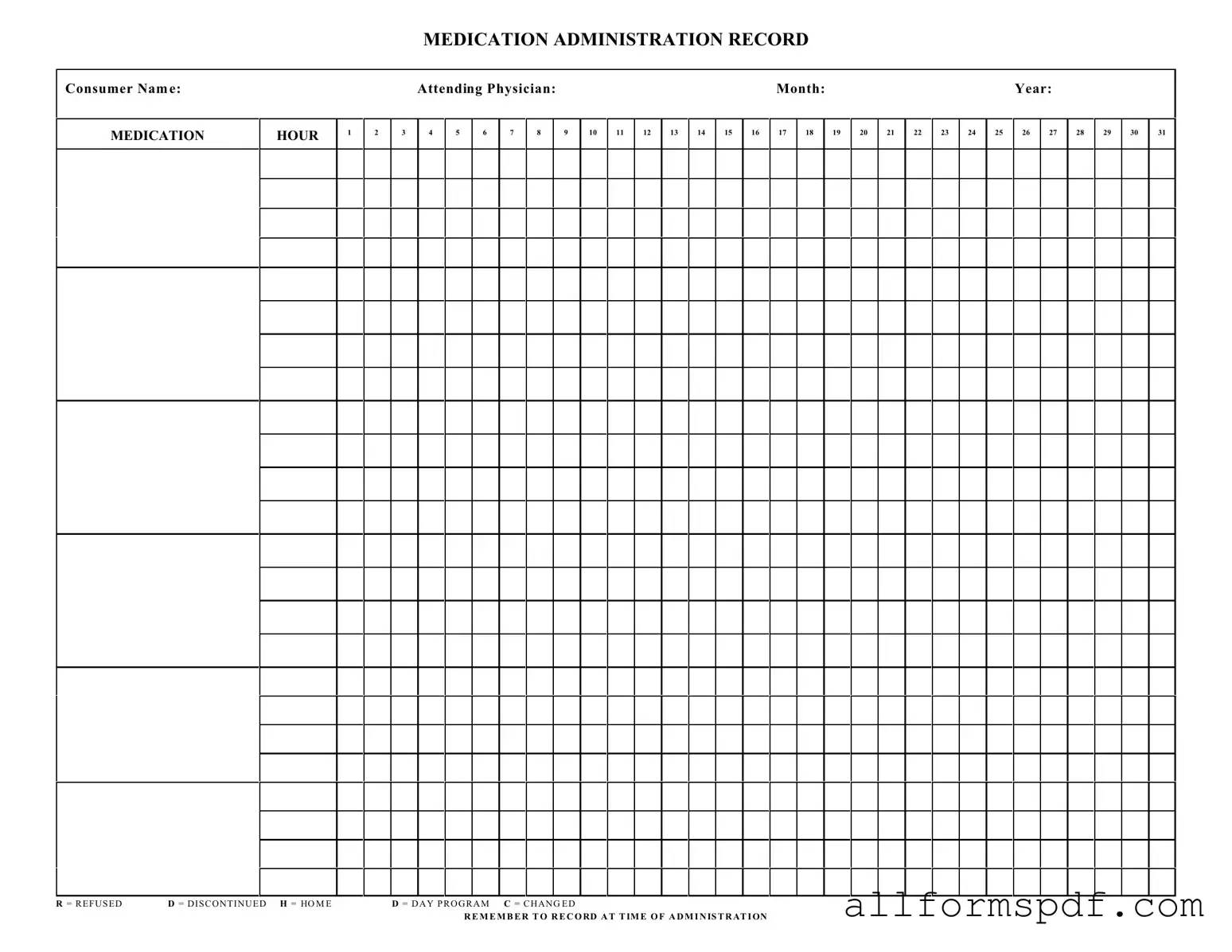Filling out the Medication Administration Record Sheet (MARS) is crucial for ensuring that patients receive the correct medications at the right times. However, mistakes can easily occur during this process. One common error is failing to accurately record the consumer's name. If the name is misspelled or omitted, it can lead to confusion and potential medication errors. Every detail matters, and accuracy in identifying the patient is essential for their safety.
Another frequent mistake involves the attending physician's name. This information is vital for tracking who prescribed the medications. If the physician's name is not included or is incorrect, it may complicate communication among healthcare providers. This can hinder the ability to address any issues related to the patient's treatment plan.
Additionally, many individuals overlook the importance of documenting the medication hour. Each medication must be administered at specific times, and failing to note these hours can result in missed doses. This oversight can have serious implications for the patient's health, especially if they are on a strict medication schedule.
Another common mistake is not using the correct codes for documenting medication statuses. For example, if a medication is refused, it should be marked with an "R." Mislabeling or failing to mark medications as refused, discontinued, or changed can lead to misunderstandings about a patient's treatment plan and can affect their overall care.
Lastly, many people forget to record the time of administration. This is a critical step in the process. Without this information, it becomes challenging to track when medications were given, potentially leading to double dosing or missed doses. Keeping accurate time records is essential for maintaining the integrity of the medication administration process.
